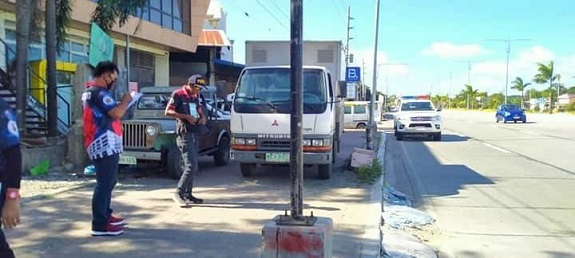
The City Planning and Development office recently received the document of a study conducted by the Metropolitan Manila Development Authority on the traffic situation of Iloilo City. This was a collaborative effort and help from the MMDA office.
Quoting a part of the file, here are the observed road and sidewalk traffic conditions and situations in various parts of the city.
1. Obstruction on the sidewalk forced pedestrian to walk on the carriageway.
2. Delinquent motorist obstructing the pedestrian path.
3. Both sidewalks and carriageways are being used for personal consumption.
4. Commercial signage obstructing part of sidewalk and carriageway.
5. Road level of service not fully utilized due to obstructions and illegal parking.
6. Lack of pedestrian footpath due to high roadside friction.
7. Illegal parking. Occupying one lane of the road tremendously affects the smooth flow of traffic.
8. Lack of necessary pavement markings and traffic signages.
9. Tricycle, pedicabs, and jeepney terminals obstructing the carriageway and pedestrians.
10. Inappropriate and substandard traffic signage.
I have also personally observed their findings whenever I walk the city streets going home from the office at the city hall. City proper roads especially on the business street areas are usually full of various road obstructions and the traffic flow is very slow.

MMDA also included in their report the Level of Service which is sort of an assessment to rate the flow of traffic in a certain road or intersection. It is defined below as:
The level of service is a qualitative measure used to relate to the quality of motor vehicle traffic service. There are six levels to define this measure and are lettered from A to F.
Details of the six levels of service are below:
Level of Service A: Free-flow traffic with individual users virtually unaffected by the presence of others in the traffic stream.
Level of Service B: Stable traffic flow with a high degree of freedom to select the speed and operating conditions but with some influence from other users.
Level of Service C: Restricted flow that remains stable but with significant interactions with others in the traffic stream. The general level of comfort and convenience declines noticeably at this level.
Level of Service D: High-density flow in which speed and freedom to maneuver are severely restricted and comfort and convenience have declined even though flow remains stable.
Level of Service E: Unstable flow at or near capacity levels with poor levels of comfort and convenience.
Level of Service F: Forced traffic flow in which the amount of traffic approaching a point exceeds the amount that can be served. LOS F is characterized by stop-and-go waves, poor travel times, low comfort and convenience, and increased accident exposure.
We are hoping with the joint forces of the various offices of the city government that we can come up with an ideal set of solutions and its proper implementation.
